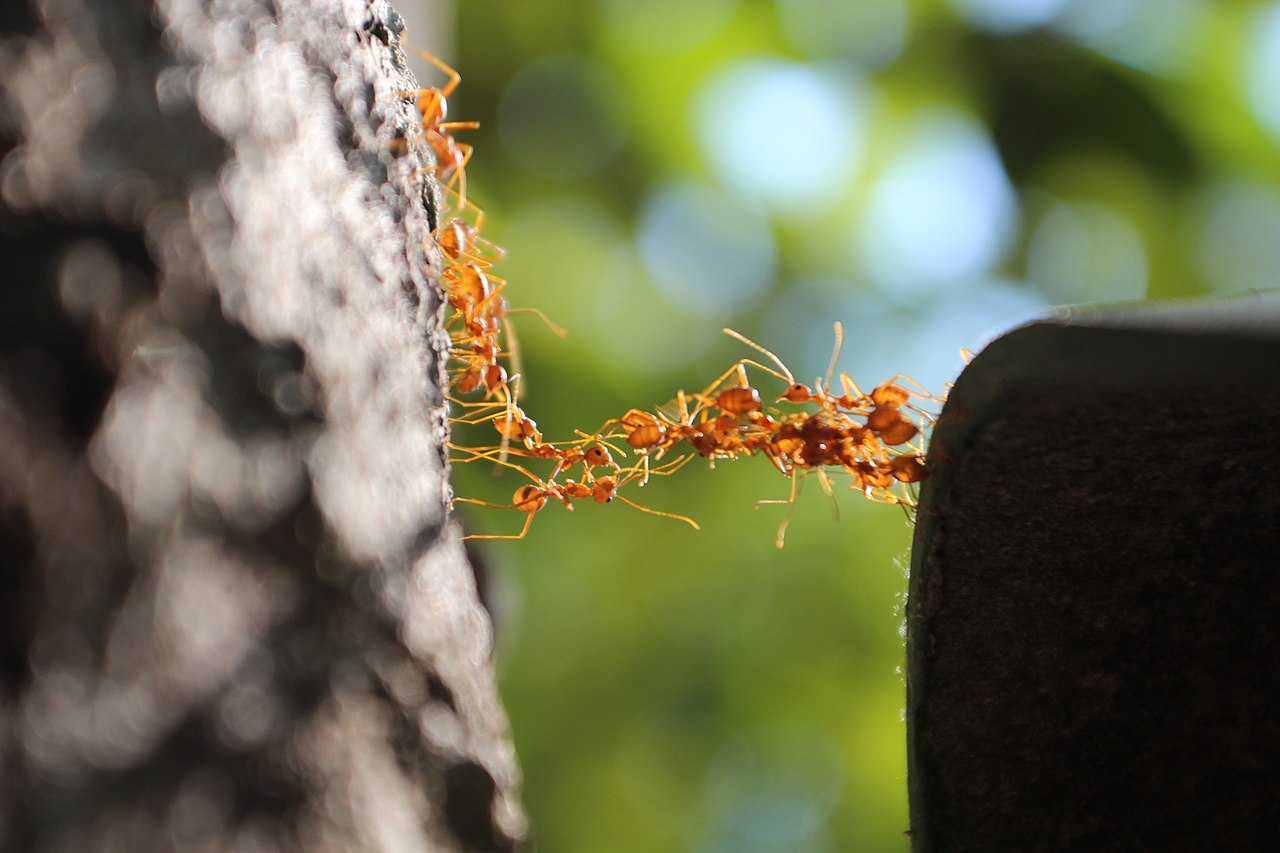Why some species thrived after catastrophe– some rules for making the most of an apocalypse
66 million years ago, an asteroid struck the Earth, ending the Cretaceous period. In a moment, the world plunged into darkness, killing the dinosaurs and >90% of all species alive. Today, every living thing descends from the handful of surviving species, but not all survivors thrived.
The asteroid 243 Ida, and its little moon Dactyl
Some groups- birds and placental mammals, butterflies and ants, sunflowers, grasses- diversified. They took advantage of the devastation. Others, like crocodiles and turtles, didn’t. And still others, like multituberculate mammals and champsosaurs, survived the asteroid but went extinct in the aftermath. Why the difference? Surprisingly, what separates winners and losers wasn’t how hard extinction hit them. Rather, winners had qualities that made them adaptible and competitive after the extinction- they were fast growing, mobile, cooperative, and clever.
Sharks were amazing survivors. Innovators? Not so much. They just kinda kept doing what they were doing.
Some groups were completely eliminated — dinosaurs, pterosaurs, plesiosaurs, ammonites. Obviously, they couldn’t take part in a recovery. But among survivors, the groups that won out tended to be those hit hard by extinction. Crocodilians, turtles, and sharks were spared the brunt of the extinction, but aren’t especially diverse now. Meanwhile, groups that dominate today were devastated. Snakes and lizards saw over 80% extinction. Mammals were hit harder, suffering 90% extinction. Perhaps 3 bird species survived, suggesting extinction rates approaching or exceeding 99.9%. These groups were winners only in a relative sense— 99.9% extinction is bad, but beats 100% extinction among tyrannosaurs. But while these animals initially suffered , they thrived when the dust literally settled. Four things gave them an edge.
Metabolism
Flowering plants can photosynthesize and grow far more rapidly than other plants. These sunflowers complete their whole life in a summer.
First, winners had high metabolisms. Metabolic rate is how fast biological processes – chemical reactions that let organisms grow, move, digest, reproduce– happen. Higher metabolism means higher food requirements, initially a liability for warm-blooded birds and mammals during the impact winter, when plants couldn’t make food. But afterwards, being able to eat, grow, and breed fast let birds and mammals rapidly increase their numbers, compete effectively, and colonize new habitats. Fast-growing flowering plants, especially grasses, flourished at the expense of slower-growing species.
Warm blood allows you to move, grow, digest, and breed rapidly- even when it’s cold. It’s no coincidence warm-blooded mammals and birds dominate post-Cretaceous ecosystems.
Even within these groups, we see high metabolism providing an edge. In mammals, placental mammals, with higher metabolisms, outcompete marsupials. Passerines, the most diverse birds, also have higher metabolic rates than other birds.
Mobility
The ability to move to new habitats lets you quickly exploit new opportunities
Second, mobility promotes adaptability. Flight let birds, bats, butterflies and ants colonise new habitats, then diversify. Mammals, being highly mobile, quickly invade new habitats – think rabbits in Australia, or deer in New Zealand- in a way that turtles don’t. Flowering plants evolved tricks – fruits, parachutes, burs, floating husks – to let wind, water or animals carry their seeds. It’s hard to displace the competition once it’s established, so being first into a new habitat provides a massive competitive advantage.
Mammals can’t fly, but large terrestrial mammals can cover huge distances quickly. Even small mammals disperse quickly- rabbits took just 50 years to spread through all of Australia.
Cooperation
Third, winners tend to cooperate. Lions and wolves make prides and packs to take down prey and defend territory. Elephants and zebras use herds for defense. Birds flock to find food and evade predators. Ants and mound-building termites assemble vast family groups, outcompeting solitary insects. Birds, mammals and social insects also cooperate with kin, by feeding and caring for offspring, spreading their genes more effectively.
Some species cooperate with other species. Leafcutter ants and termites create mutualisms with fungi, cultivating them in return for food. Flowering plants give nectar and fruit to animals, which pollinate flowers and spread their seeds. By cooperating, these species compete better, so cooperative animals like ants, elephants and orcas tend to play larger roles in the ecosystem than solitary ones like alligators or turtles.
Intelligence
But maybe the most striking trend is the rise of intelligence. Mammals and birds have the largest brains of any animals. The largest-brained mammals, the placentals, have outcompeted their competitors- marsupials and egg-laying monotremes. The most diverse birds, the passerines and parrots, are the brainiest. Within insects, social insects- ants, bees, termites- have complex behaviors that emerge from interactions of simple actors- swarm intelligence. They’re the insects that dominate post-Cretaceous ecosystems.
But intelligence doesn’t just make animals more competitive. It accelerates adaptation, because the first step in changing your DNA is changing your mind.
Dogs in Rarotonga, in the Cook Islands, readily swim out to small islands on the edge of the reef. They’ve also learned to hunt for crabs in the water. Mammals can quickly learn to exploit new habitats and foods.
For example, before mammals could evolve into whales, they first had to learn to swim, and fish. Only afterwards could natural selection create flippers and sonar. Before horses could evolve, their omnivorous ancestors switched to a vegan diet. Then, natural selection favoured tall-crowned teeth and complex guts to break down tough plants. Behaviour leads; genes follow.
That means the greater an animal’s behavioural flexibility, the more tricks it can learn, and the greater its adaptive potential. Animals don’t decide their evolutionary futures. They do decide what to eat. How to forage. Where to live. Whale ancestors didn’t dream of becoming dolphins. They did dream of catching fish, and imagined new fishing grounds. Being able to learn from yesterday, process information in dreams tonight, imagine different outcomes tomorrow – learning, memory processing, creativity – increase the number of potential evolutionary futures.
No Accident
Although the continents were isolated in the early Cenozoic, remarkably similar mammal- and bird-dominated ecosystems evolved independently in South America, Africa, Australia and the Eurasian-North American supercontinent. That implies these groups’ dominance was no accident. What’s really striking is these trends weren’t new.
Late Cretaceous dinosaurs were faster, smarter, more social, and more warm-blooded than those from 150 million years earlier
Dinosaurs show similar patterns. Late Cretaceous dinosaurs had higher growth rates than their Triassic ancestors. They were more mobile, some were fast runners, others- birds– flew. Their brains were larger than in earlier dinosaurs. T. rex was faster, smarter, with a higher metabolic rate than its Triassic forebears. Many- ceratopsians, duckbills, avimimids– show herding behaviors not known in earlier dinosaurs.
During the asteroid winter, the rules briefly changed. Warm-blooded, fast-moving, cooperative, intelligent birds, mammals and dinosaurs- did poorly against turtles and alligators. Dinosaurs vanished. Afterwards, these trends reasserted themselves.
Evolution may offer us some lessons. Be quick. Move to find new opportunities. Work with others. Try new things. But above all, change, adapt. These are almost always good strategies, but especially when you’re down and out, and trying for a comeback.









